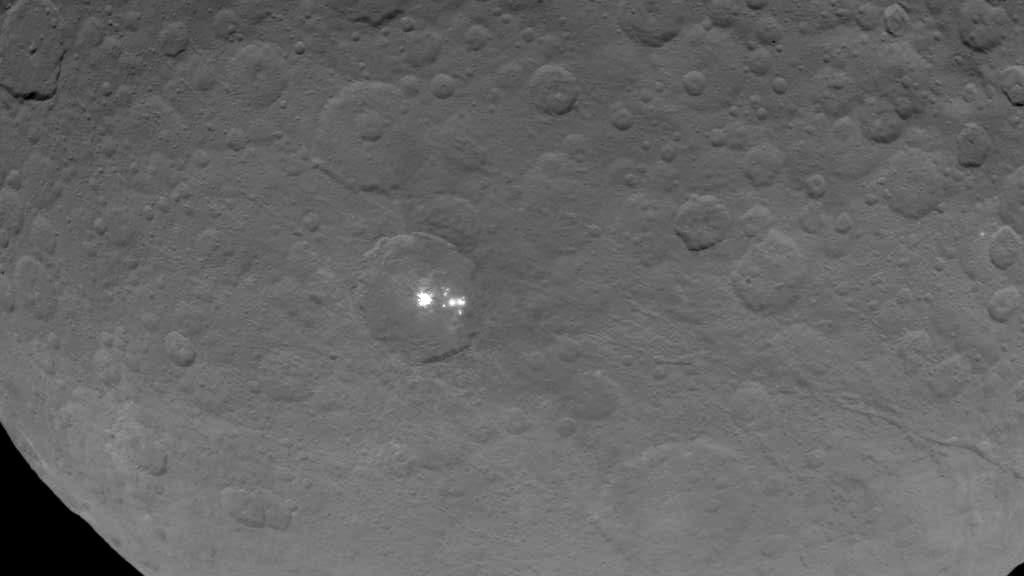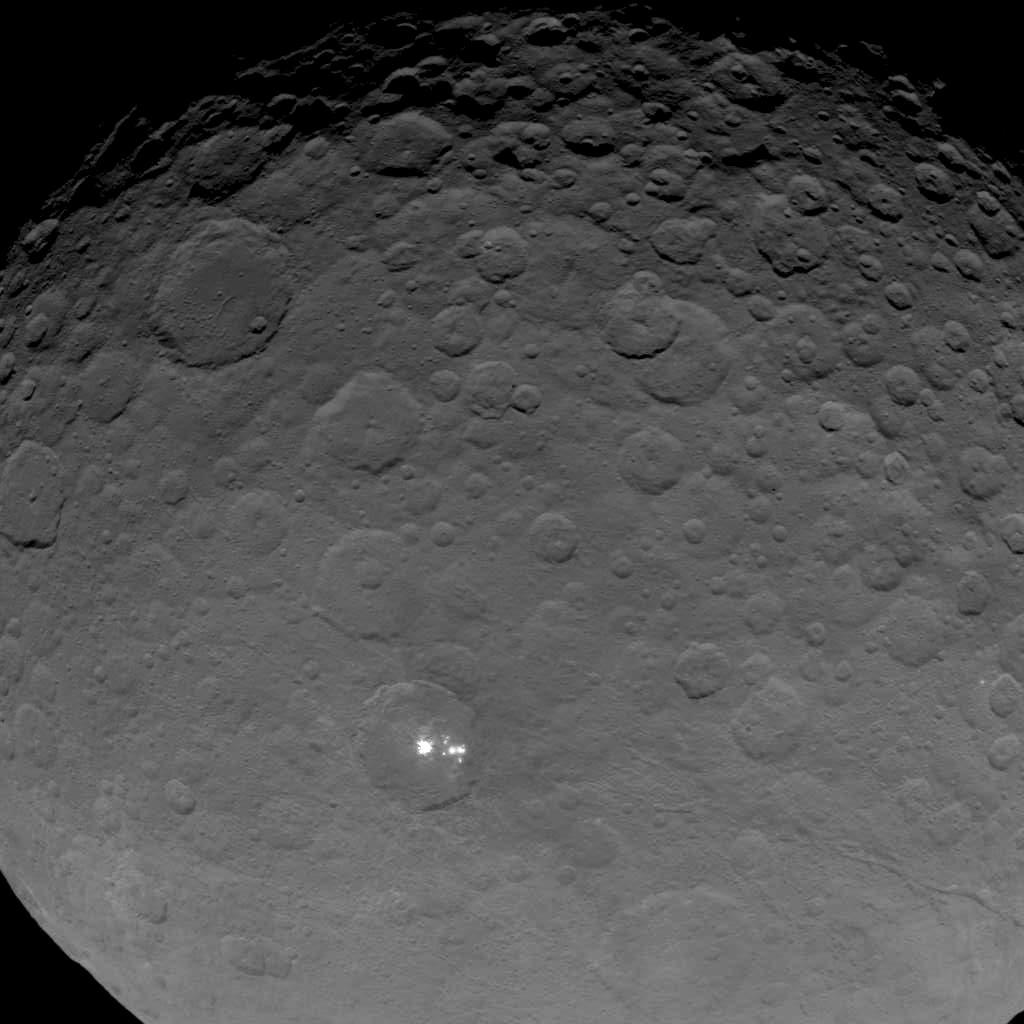What Are Those Bright Spots on Ceres? Go Vote!

The puzzling white spots on the surface of the dwarf planet Ceres are definitely reflecting sunlight, scientists said, but the cause of the marks remains a mystery.
The newest batch of images from the Dawn spacecraft, which began orbiting Ceres on March 6, was released May 15. The data gleaned from these images has increased Dawn scientists' confidence that the white spots are caused by reflected sunlight, and that idea can help them narrow down the possible candidates for the spots' contents.
With the release of these new images, NASA has asked the public to submit a guess for what is creating the spots: volcanos, geysers, rocks, ice, salt deposits, or "other." As of this writing, 37 percent of people who took NASA's poll for what the white spots might be said "other." Alien colonies, perhaps? About 30 percent of voters picked ice, with 10 percent opting for volcanoes. Geysers ranked next with 9 percent, followed by salt deposits (8 percent) and rock (6 percent).[Amazing Photos of Dwarf Planet Ceres]
You can vote for your favorite choice here: http://www.jpl.nasa.gov/dawn/world_ceres/.

"Dawn scientists can now conclude that the intense brightness of these spots is due to the reflection of sunlight by highly reflective material on the surface — possibly ice," Christopher Russell, principal investigator for the Dawn mission, said in a statement from NASA.
Hints of the white spots on Ceres were seen almost a decade ago in images captured by the Hubble Space Telescope, said Marc Rayman, chief engineer for the Dawn mission. But prior to Dawn's approach of Ceres, scientists were able to say very little about what the white spots might be. As Dawn has provided increasingly better images of these regions, Dawn scientists have stated that the spots appear to be reflections of sunlight.
The most recent images were taken at an altitude of 4,500 miles (7,200 kilometers) above Ceres and have a resolution of 2,250 feet (700 meters) per pixel. Ceres is the largest known object in the asteroid belt between Mars and Jupiter, and it is identified as both an asteroid and a dwarf planet. Its average diameter is 590 miles (950 km); its surface area would cover about 38 percent of the continental United States.
Breaking space news, the latest updates on rocket launches, skywatching events and more!
Dawn is scheduled to get an even closer look at the spots when it enters a second orbit on June 6, which will place it at an altitude of 2,700 miles (4,400 km). Then, the spacecraft is set to enter into even lower orbits around Ceres, according to the mission website.
Dawn still has more than a year of observing time around Ceres, after which it will depart for Vesta, the second most massive body in the asteroid belt. The mystery of the white spots is a tantalizing one, but it is not the central goal of the Dawn mission.
"By studying Vesta and Ceres, we will gain a better understanding of the formation of our solar system, especially the terrestrial planets and, most importantly, the Earth," Raymond said on the mission website. "These bodies are samples of the building blocks that have formed Venus, Earth and Mars. Vesta-like bodies are believed to have contributed heavily to the core of our planet, and Ceres-like bodies may have provided our water."
Follow Calla Cofield @callacofield. Follow us @Spacedotcom, Facebook and Google+. Original article on Space.com.
Join our Space Forums to keep talking space on the latest missions, night sky and more! And if you have a news tip, correction or comment, let us know at: community@space.com.

Calla Cofield joined Space.com's crew in October 2014. She enjoys writing about black holes, exploding stars, ripples in space-time, science in comic books, and all the mysteries of the cosmos. Prior to joining Space.com Calla worked as a freelance writer, with her work appearing in APS News, Symmetry magazine, Scientific American, Nature News, Physics World, and others. From 2010 to 2014 she was a producer for The Physics Central Podcast. Previously, Calla worked at the American Museum of Natural History in New York City (hands down the best office building ever) and SLAC National Accelerator Laboratory in California. Calla studied physics at the University of Massachusetts, Amherst and is originally from Sandy, Utah. In 2018, Calla left Space.com to join NASA's Jet Propulsion Laboratory media team where she oversees astronomy, physics, exoplanets and the Cold Atom Lab mission. She has been underground at three of the largest particle accelerators in the world and would really like to know what the heck dark matter is. Contact Calla via: E-Mail – Twitter
